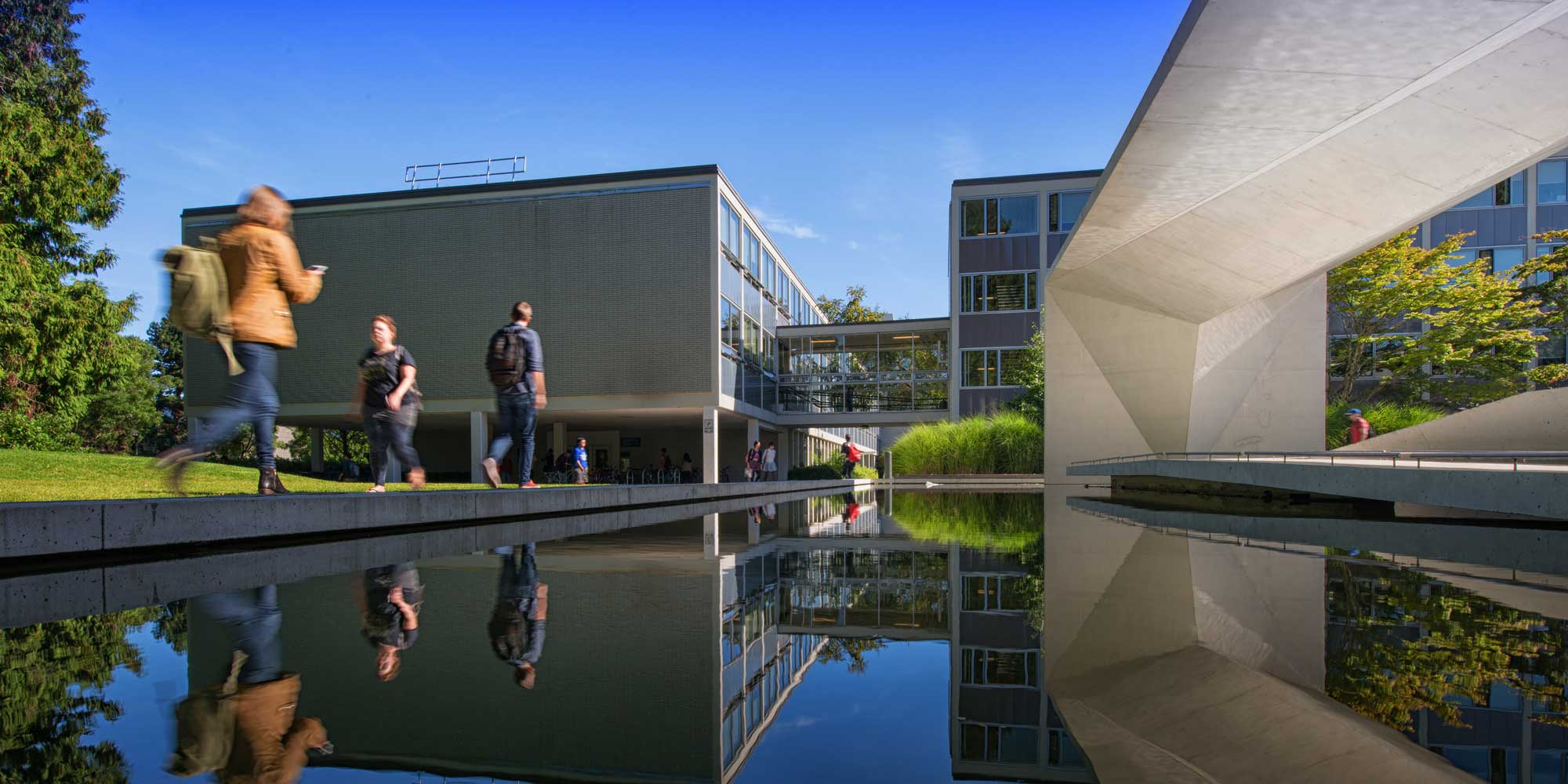

1,260 Arts alumni participated in the 10+ year-out Arts alumni survey. We asked Associate Dean Laura Moss to share the biggest takeaways.
As Associate Dean (Students), in the Faculty of Arts, Laura Moss knows many current students worry about their career prospects, or feel unprepared for life after graduation. Having taught for over 20 years, however, she also knows how many of her former Arts students have gone on to a range of successful and meaningful careers, countering some of the myths that prevail about Arts degrees as unproductive. But she didn’t have a systematic way to understand where UBC Arts graduates actually end up.
So two years ago, Dr. Moss put together a research team to conduct a comprehensive survey of UBC Arts alumni who graduated 10-15 years ago. Over 1,200 UBC Arts alumni responded, sharing data on their employment paths and incomes, insights on what they felt was important in their education and why, their memories of student and academic life, and their recommendations about how the Faculty can better support current and future students.
Dr. Moss says the results will inform the Faculty’s planning and priorities for years to come. We asked her to share some key takeaways and biggest surprises from the results.
This story is part of a two-part series reflecting on the results of The 10+ Year Out Faculty of Arts Alumni Survey: Report. Learn more about the most relevant takeaways for students.
You spent two years designing, delivering and analyzing this survey. Why did you embark on this and what did you hope to learn?


Dr. Laura Moss, Associate Dean, Students
We wanted deeper insight into the life cycle and trajectory of Arts students. We knew about employment data of Arts graduates two years and five years post-graduation [via the BC Baccalaureate Graduate Surveys], but wanted to look beyond that. Where have our students ended up in the longer term? How did they get there? What do they remember about their time at UBC? What was missing from their university degrees and how can we do better? We wanted this data to help inform our academic and co-curricular programming.
How did you design the survey and analyze the responses?
We decided to turn this into a research study instead of just a survey. We spent a year working with survey designers and launched it in spring 2021. Then we spent a year analyzing the data. We received over 10,000 written responses to the open-ended questions on the survey. My own background as a literary scholar came in handy. I am trained to distill large amounts of text into coherent themes, patterns, and ideas, and so I tackled the qualitative data. At the same time, our research team looked at the data quantitatively. We then brought together the qualitative and quantitative findings and identified key takeaways.
Who responded to the survey, and do you think the participants are representative of their cohort?
1,260 Arts alumni responded, representing 11% of the 2006-2011 cohort. We recognize there may be a selection bias; those who chose to respond may be more active and engaged alumni who maintain a sense of connection to the university. That said, those who participated are representative of their graduation cohort with respect to binary gender, Indigenous identity, degree, convocation year, and basis of admission. The only area where we received less representation than we hoped for was with international students.
You’ve outlined the key findings in a comprehensive report. What do you most want faculty and staff to know?
We now have data that backs up what we intuitively know, which is that an Arts degree is relevant to world issues, it’s practical and it’s meaningful. Two-thirds of the respondents say their current job is at least somewhat related to their degree and over a third use the content of their degree in their day-to-day jobs. Given the sheer range of occupations that were reported, that is a remarkable percentage.
We found a line of continuous growth on income levels. By 10+ years after grad, Arts alumni have median incomes well above the BC median for their age cohort.
But perhaps more interestingly, they report incredibly high levels of career satisfaction: 80-85% said their work is meaningful, allows them to use their capabilities to the fullest, and gives them opportunities to grow. I showed this to an HR director and she said these levels of work satisfaction are through the roof.
Did participants share any critical feedback that you want faculty and staff to be aware of?
Yes — we absolutely heard loud and clear that alumni wish they’d had more co-curricular opportunities while they were at UBC, like co-op, experiential learning, hands-on learning, access to alumni, global seminars. We also learned that those who did take part in small cohort experiences and experiential learning had higher levels of career success and income, and a stronger sense of belonging and satisfaction with their degrees. The takeaway is that we need to spend more time and energy thinking about the student beyond the classroom.
Another big criticism was around lack of belonging and community: 35% said they didn’t feel like they belonged and 40% didn’t feel connected to their program. That gave us pause. We saw a real lack of connection with the university particularly with students who commuted to campus for their whole degrees. Many alumni said it wasn’t until after they left UBC that they realized the role friendships and networks play in professional advancement. In the past decade, we’ve taken significant steps to increase student engagement and community. But I would hope faculty and staff continue to think about how we can improve a sense of connection within our programs.
Finally, many students emphasized the importance of expanding cultural and political perspectives in the course material. Several noted the need to decolonize the curriculum. They also highlighted the need for us to do better to help students from a diverse range of backgrounds feel supported both in and out of class. The lesson for us here is to continue to develop academic and student programming that fully consider issues of equity and inclusivity.
What was one of the biggest surprises for you?
We asked a more lighthearted question about whether any instructors or courses left a lasting impact. Astonishingly, given that the respondents graduated more than 10 years ago, they named more than 500 individual instructors and 1,000 different courses. I was just astounded by this. We have a lot of award-winning teachers here, but this was a much bigger list than we could have imagined. Almost every department and unit was mentioned. People spoke about how instructors inspired them, made them think differently, mentored them, gave them tips on how to move forward. I saw my own name mentioned and it made my heart flutter. I was just so excited to see that someone remembered who I was 10 years later and felt I had an impact on them. That’s the dream, that’s why we do it.
The survey showed that 77% of respondents went on to pursue further education or training after their Arts undergraduate degree. Are you concerned by how high that number is?
No, I see it as a positive thing. It means that an Arts undergraduate degree provides a strong foundation for further study, whether that’s teaching or law or business. Of course, we did hear from the occasional student who said, “I wish I’d skipped the BA and gone straight to job training,” but three quarters were satisfied with their undergraduate education. We know we’re not training one kind of professional; we’re educating students who value the range of information and approaches we’re teaching them, and we know that an Arts degree is foundational in terms of skills and content.
That said, there’s a connection between the fact that 19% went on to BCIT or an equivalent institution and the fact that many alumni would have wanted more hands-on training. So that’s what we can learn from this number: we have to invest more in experiential and applied learning. We’ve been moving in that direction already, but this reinforces it.
What are examples of “hands-on” learning that faculty can apply in their classrooms?
It’s discipline-specific. In my department [English] it might be writing book reviews for a publication. In Political Science, it might involve learning how to write a policy brief. It could be participating in a field school, or writing a business case. The idea is to help students mobilize their knowledge so that they can hit the ground running when they get into a job. Respondents really asked for that. This is not about being part of the neoliberal university where we’re trying to pump out good workers and make them more money; this is about helping students feel comfortable with their knowledge and skills as they move into the next stage of their life.
Did any findings give you cause for concern?
Yes. I was surprised and disheartened to find a significant gap in annual recorded income between men and women. Even after we controlled for everything we could control for — education, number of years in their position, location, occupation — there was still a 15% income difference between respondents who self-identify as men and women. Women started out making less and continued to make less.
How can the Faculty address this gender income gap?
I’ve had people tell me that gender income inequality is a much bigger problem than UBC Arts; this is systemic, this is global, we can’t fix it. But I think we need to consider what steps we can take to better support women who graduate from UBC. We know that among Arts graduates a decade ago, women earned less than men in their first job after university and that salary gap doesn’t narrow as they continue their careers. Is there some training we can add to our career programming around negotiating a starting salary, articulating the value of their degrees, making links between their knowledge and the income they should be getting?
You’ve recently released a report detailing the key findings. What’s next?
I’m in the process of creating individual reports for departments about where their grads went and the different paths they took. I think the faculty should conduct this study again every five years. Are there differences in outcomes? Did anything we put in place to address their comments make a difference? We’d also like to learn more about the demographics of the respondents next time. We didn’t ask about race, ethnicity, or disability, in the first iteration. Next time we’d like to.
In the meantime, data from the survey will inform the Faculty’s planning and priorities. We are investing time and energy into increasing student engagement opportunities, developing student services, and helping students develop a sense of community and connection with the Faculty of Arts.


